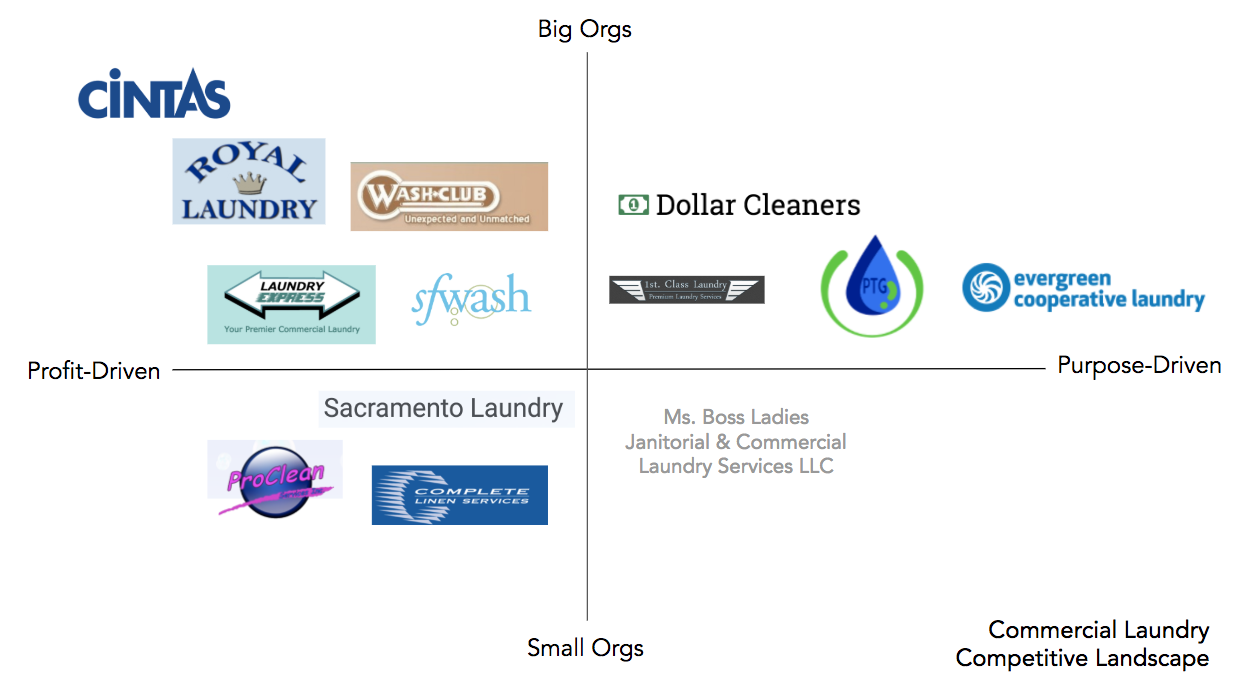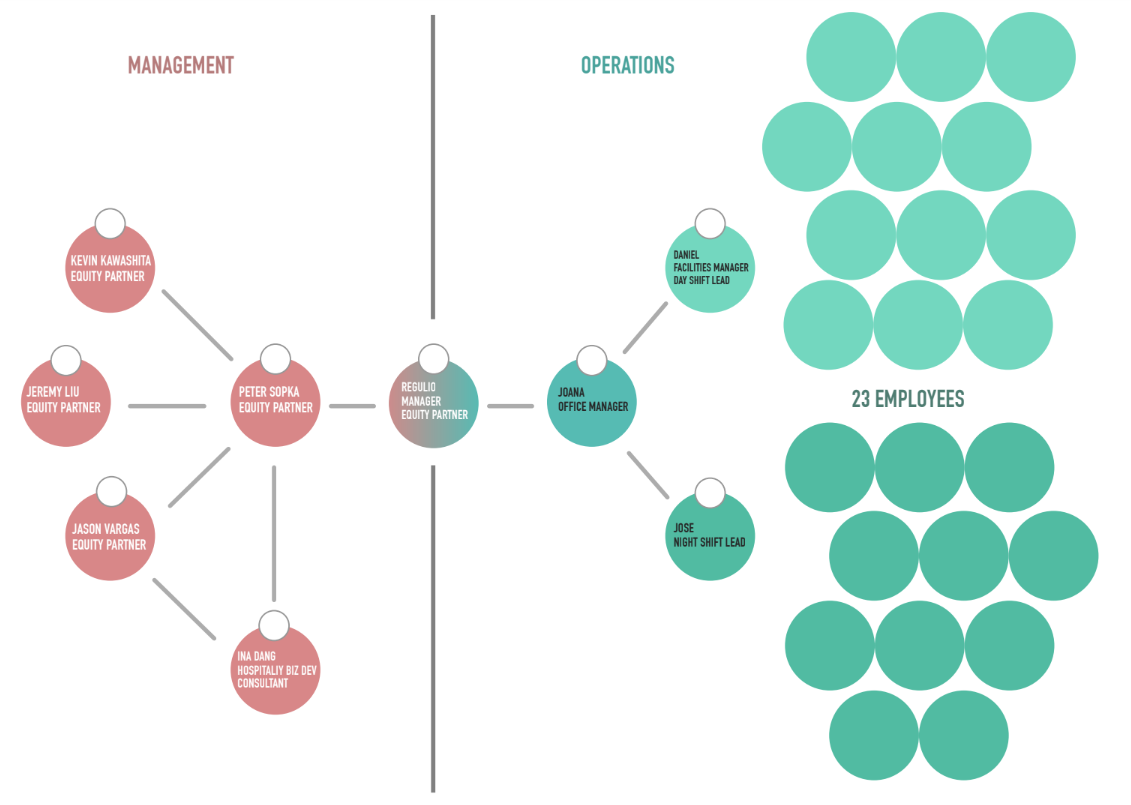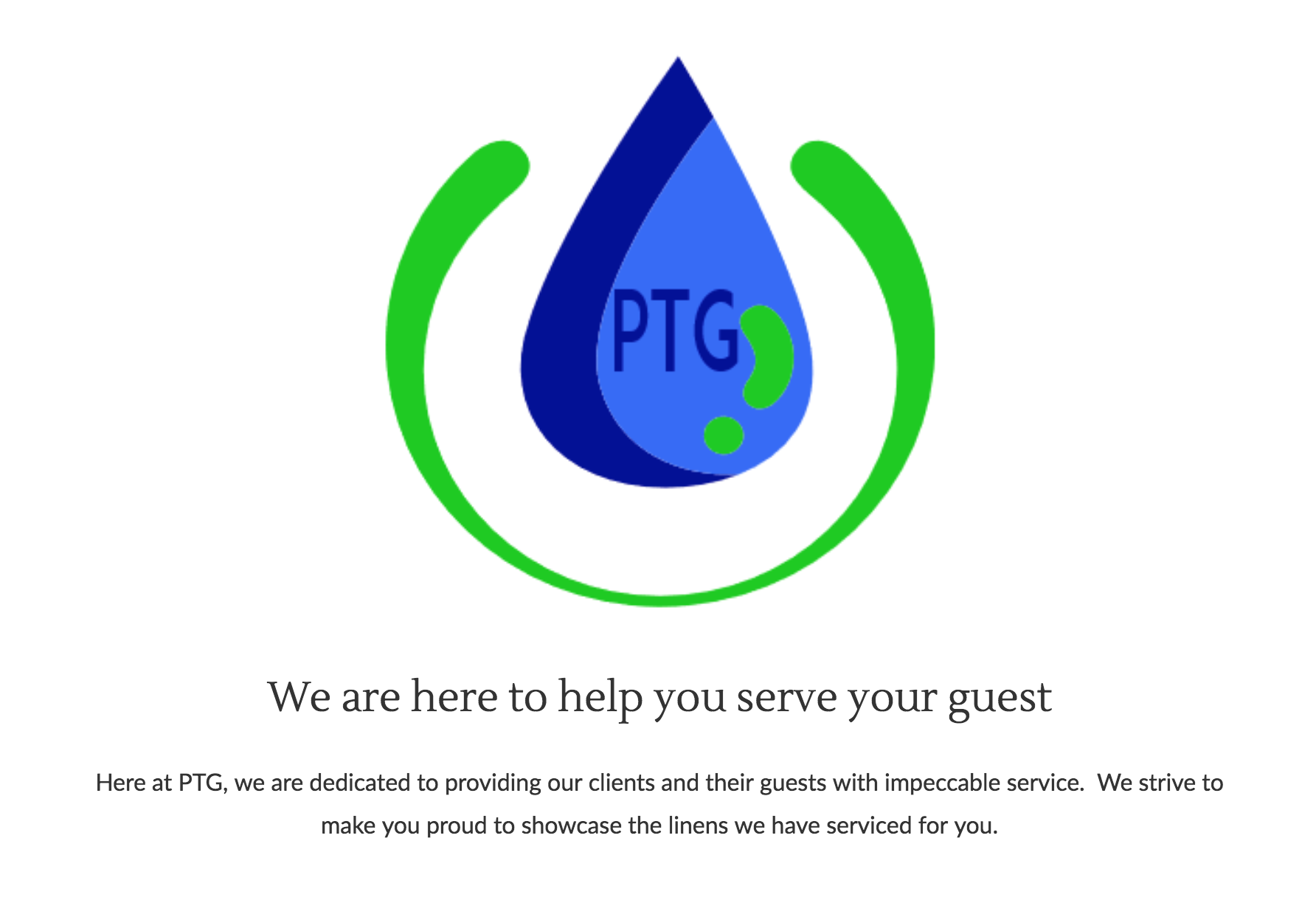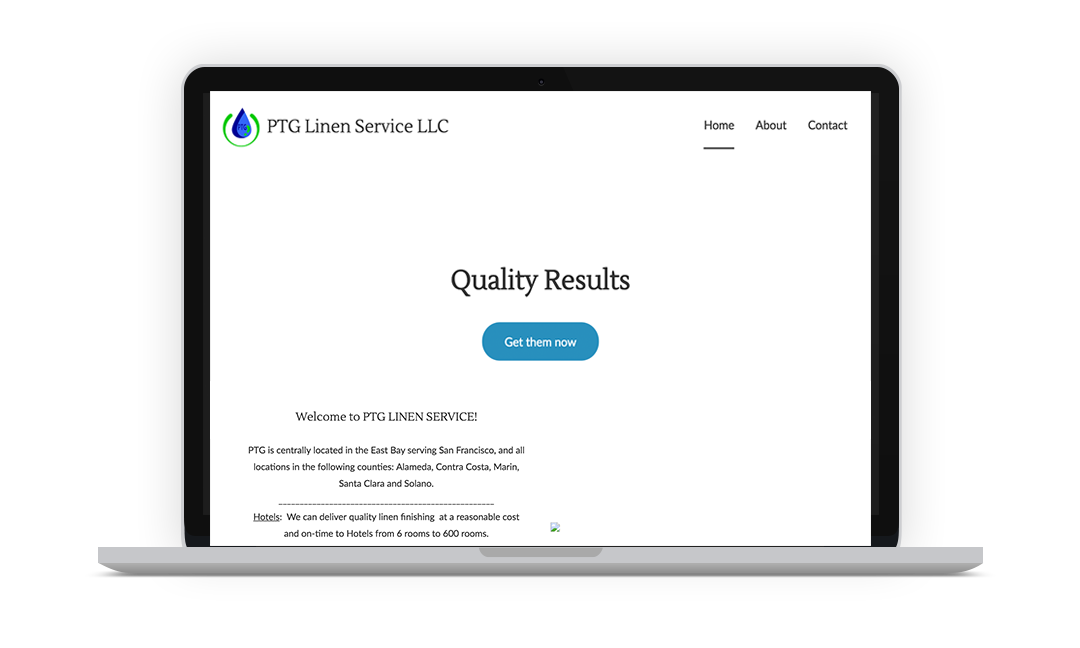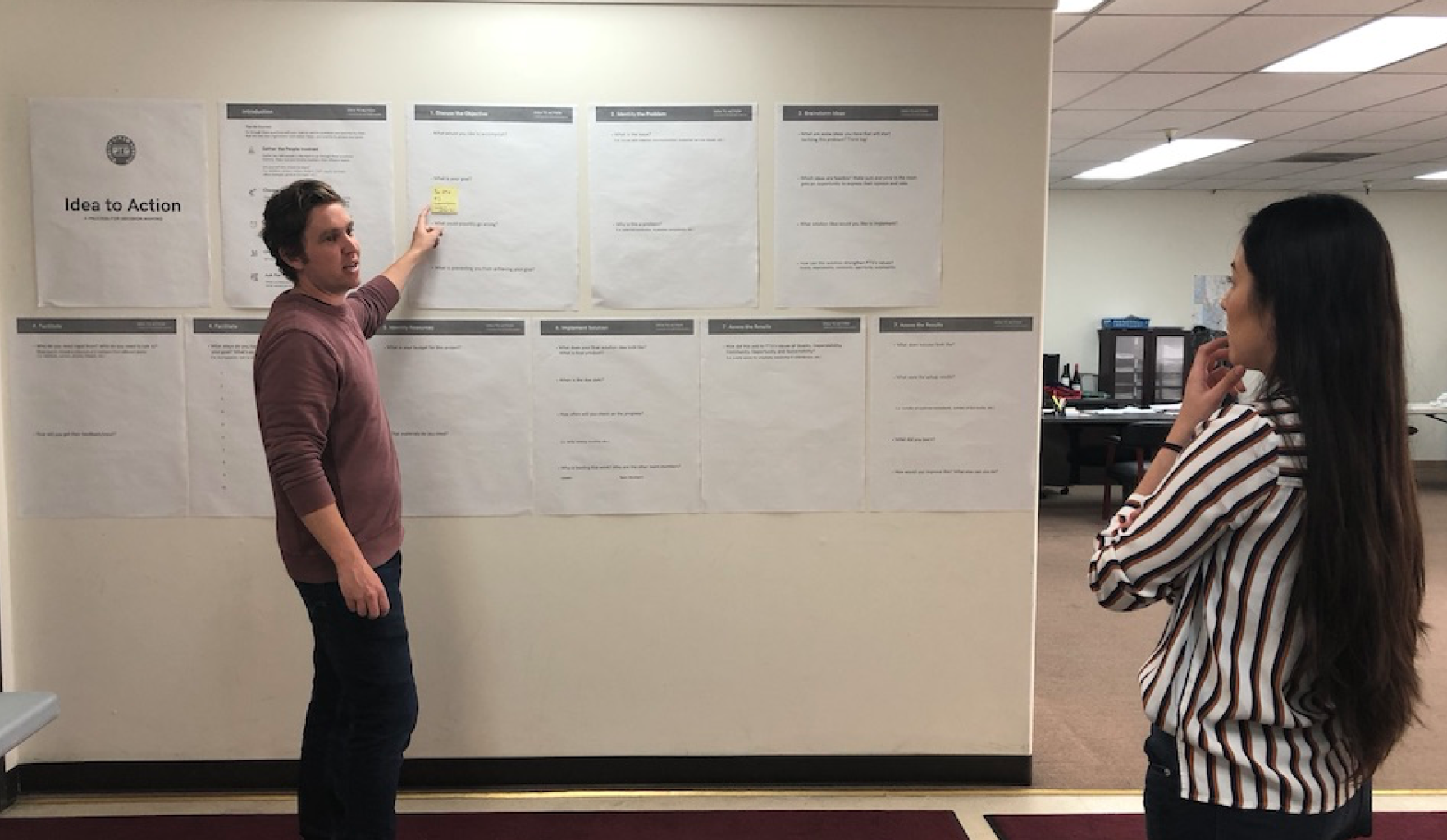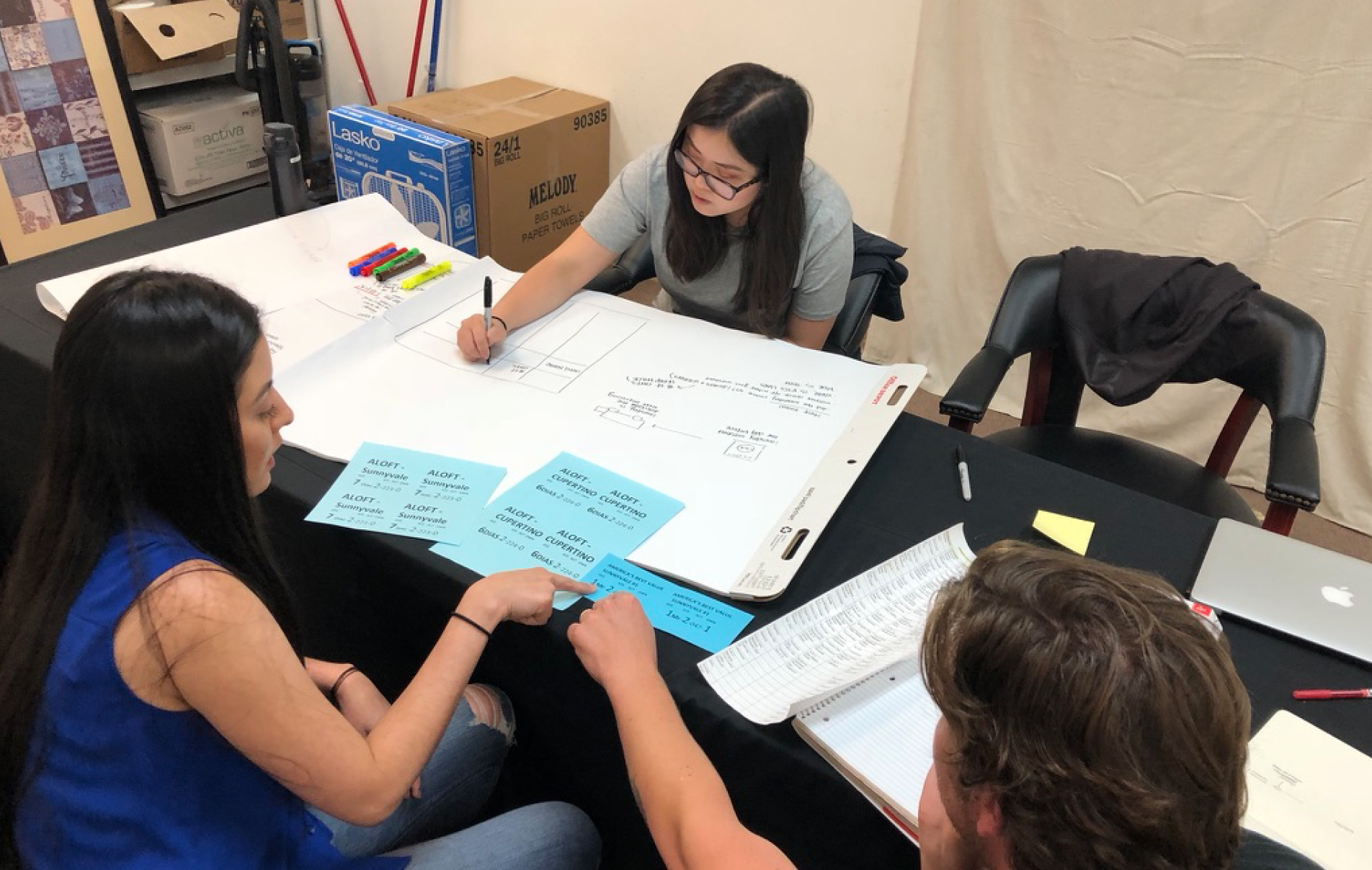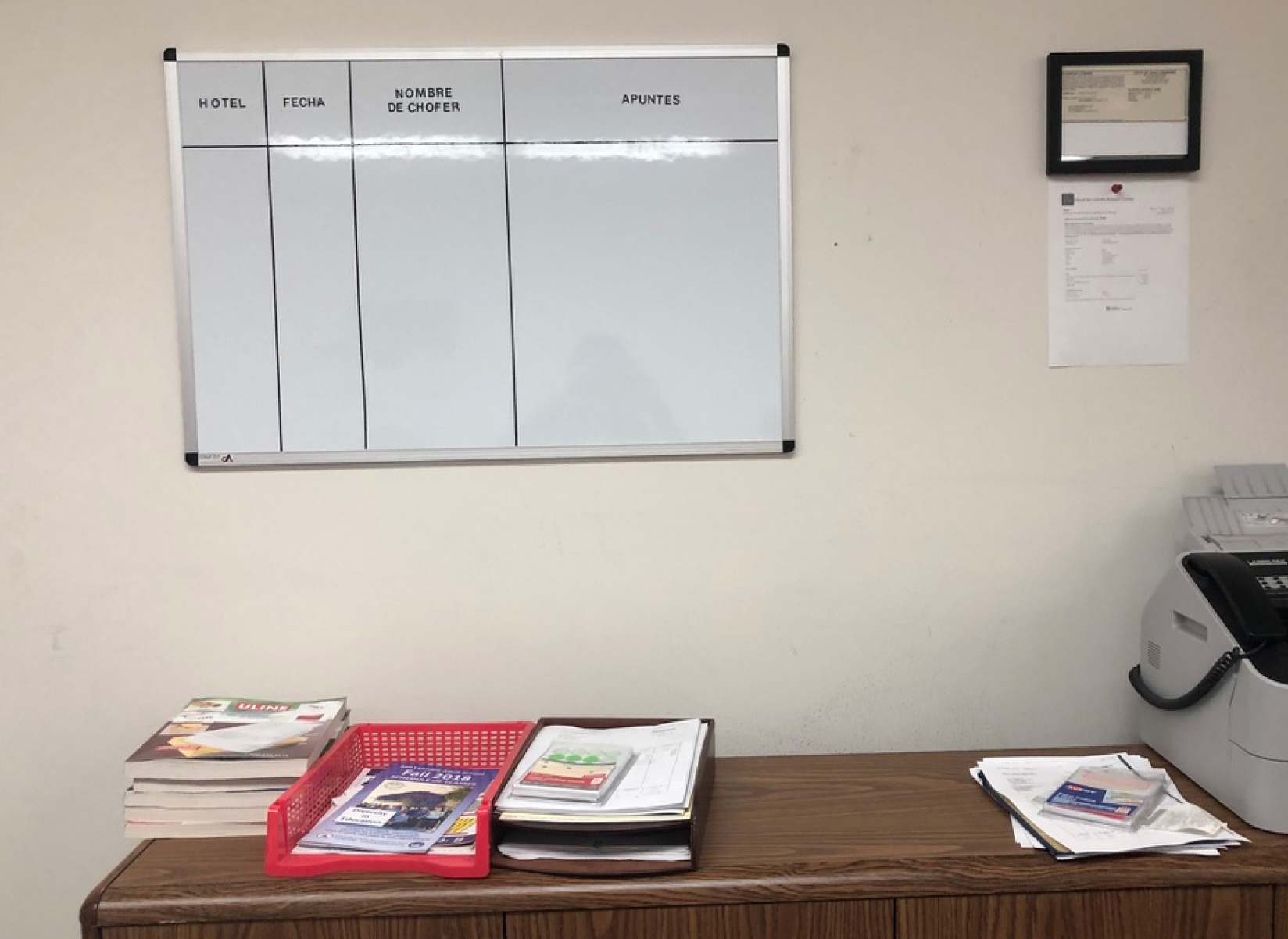
PTG Linen Service
Co-designing strategy, branding, and internal decision-making for a human-centered commercial laundry business

OVERVIEW
As part of our capstone project, we worked with PTG Linen Service to co-design their strategy and branding to become a more people-focused and purpose-driven organization.
deliverables
Designed a new visual identity and brand values
Convened PTG’s first strategic stakeholder workshop
Developed a decision-making toolkit for employee-driven innovation
TEAM
Aaron McKenzie (UX Design), Irene Ti (UX Design)
Skills
Service Design, Organization Design, Design Strategy, User Research, Facilitation, Brand Design
ADVISORS
Peter Coughlan, Kristian Simsarian, Sarah Harrison, Marc O’Brien, Sharon Green, Laura Weiss
TIMELINE
8 months

Final Products
new branding | Decision-Making Toolkit | EMployee-led prototype
New Logo and Brand Identity
We designed a new logo, visual identity, and website mockup to reflect a more approachable brand based on shared values developed during PTG’s strategic workshop: Quality, Dependability, Community, Opportunity, and Sustainability.

A Decision-Making Toolkit
The “Idea to Action” toolkit incorporates design strategy and facilitation techniques to empower employees to collaborate with other team members, tackle key business challenges, and drive innovation.
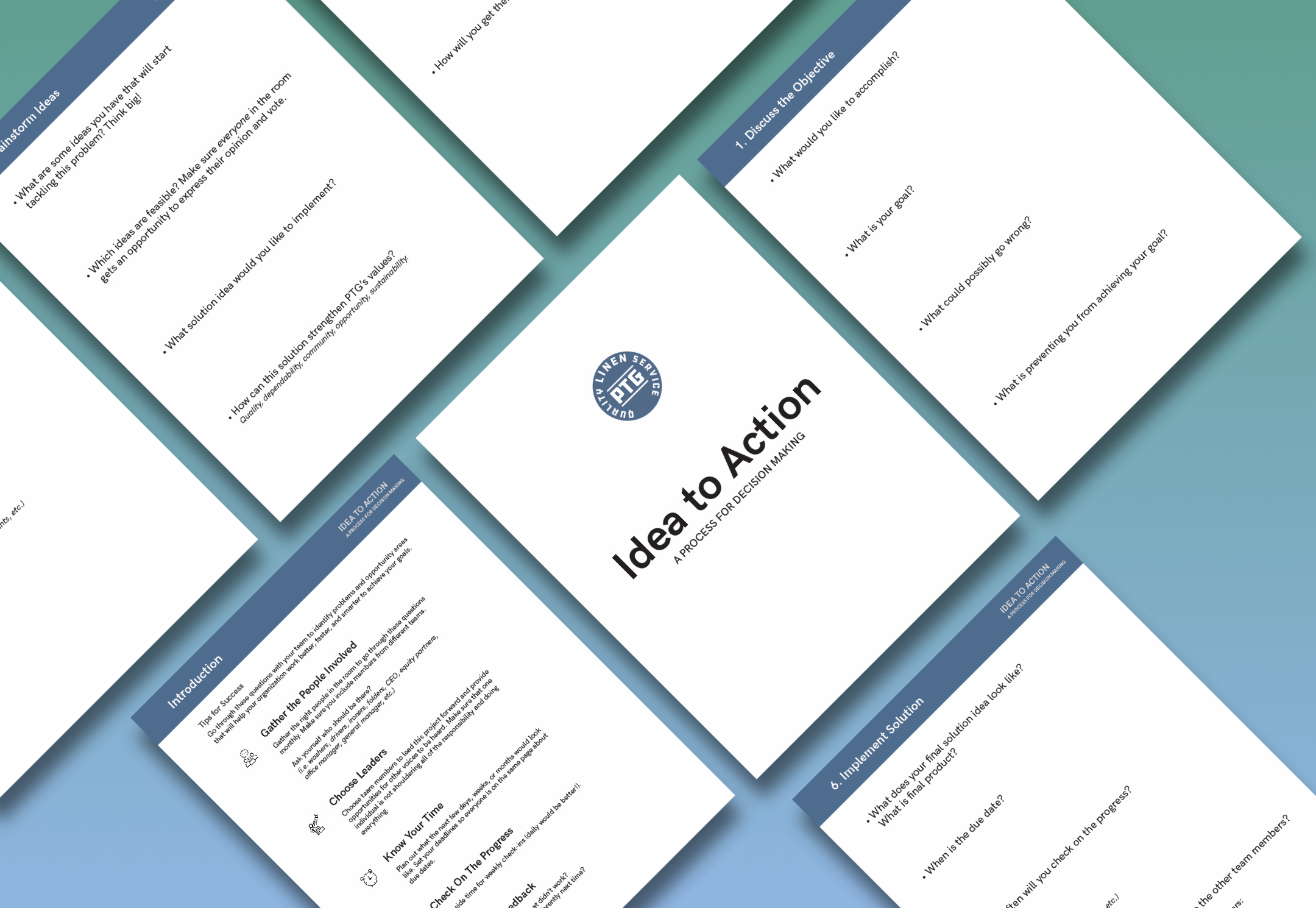
Inventory Tracking Tool
We guided PTG’s office manager through the “Idea to Action” toolkit to prototype her own idea to optimize the business: a new tool to track linens, communicate with other teams, and surface customer issues.
Employees can scan QR codes on laundry bins that redirect them to a Google Form to track inventory status and record notes, all at no cost to PTG.
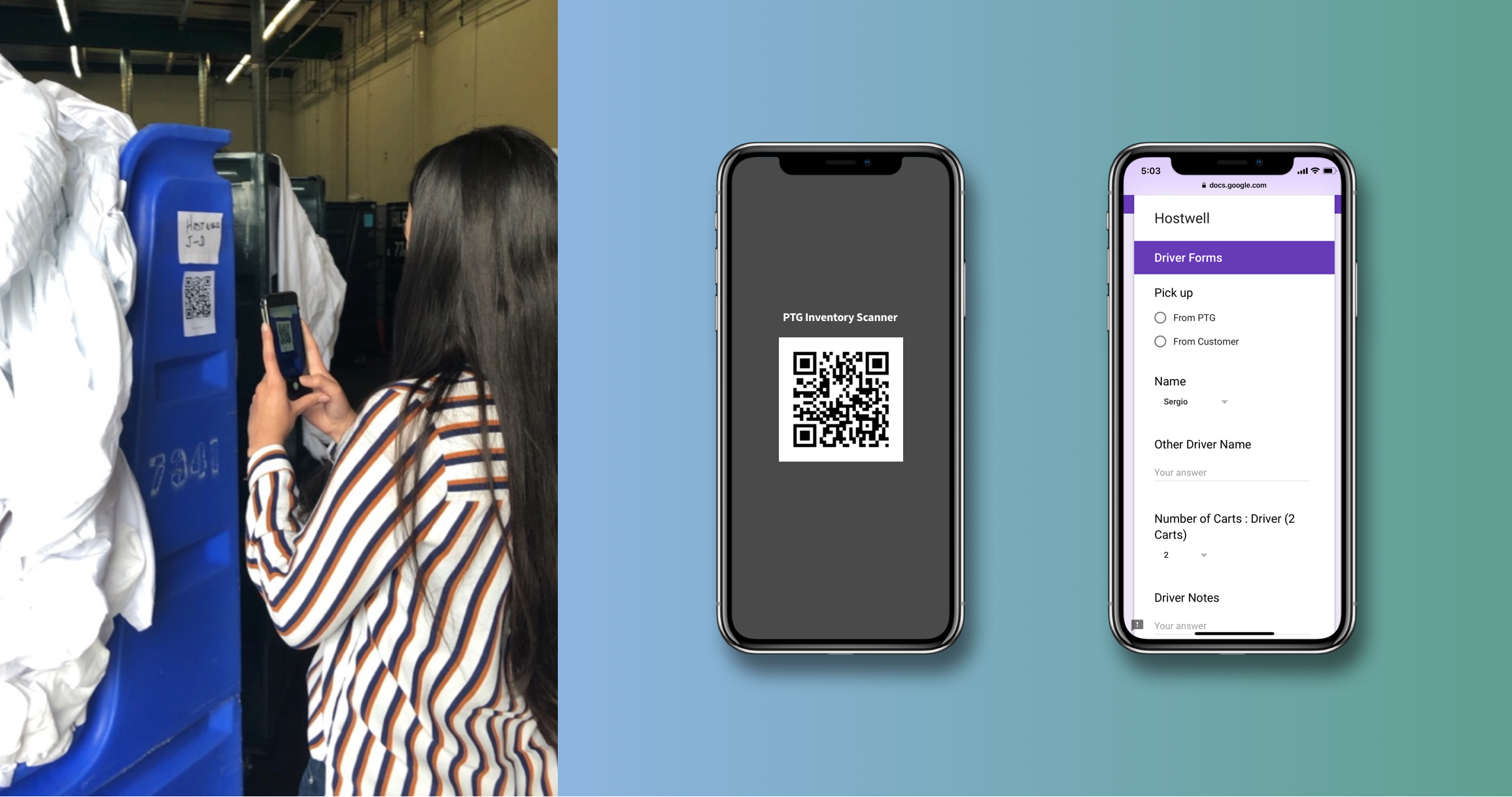
Research
Systems mapping | user interviewS
Understanding the Ecosystem
We began our design process by researching the competitive landscape of commercial laundry, mapping out PTG’s current organizational structure, and exploring opportunities for employee growth and development.
Understanding the People
We interviewed 16 people, ranging from equity partners/owners to managers and service employees who handle driving, washing, folding, and packing services.
Our research revealed a misalignment in goals at each level of the organization and lack of a feedback system to communicate these discrepancies effectively.

Need for Organizational Redesign
PTG’s current structure is rigid and hierarchical. Strategy is reserved for leadership at the top and implementation is delegated to service employees at the bottom.
The ideal system: strategy, management, and implementation roles would move more fluidly throughout the organization. This would enable more communication across teams, leading to cross-functional collaboration and business innovation.

How might we co-design a system with PTG that empowers employees while driving business growth?
Process
facilitation | design strategy | prototyping
Facilitating a Workshop to Build Consensus
We convened PTG’s first strategic workshop to:
Develop a set of shared values
Co-create a decision-making process so all employees can participate
Develop an action plan to implement ideas to optimize and grow the business.

Designing a New Brand Identity
The 5 core values that emerged from the strategic workshop were then incorporated into a brand redesign to create a more professional identity across PTG’s website, signage, and marketing collateral.
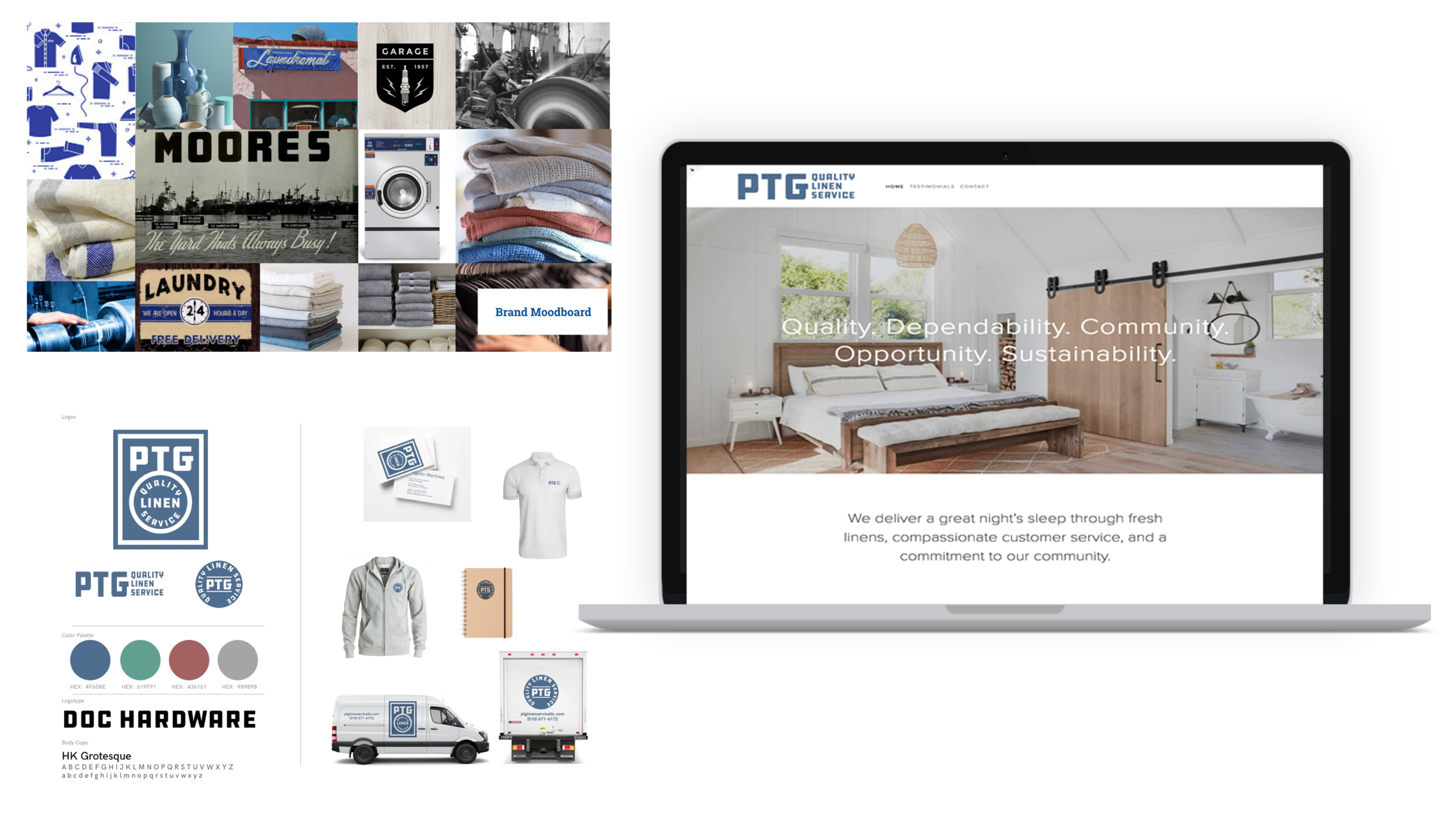
Proposed Logo, Branding, and Landing Page
Impact
Employee-Led Innovation
After learning the “Idea to Action” process, Joanna prototyped her own idea to improve communication and inventory tracking. The result: a communication board and QR-code inventory tracker linked to Google Forms. The solution leveraged existing tech at no cost to PTG.
Business Growth
I introduced PTG to a new hospitality client Sonder who specifically wanted to partner with “an organization that cares” about people, quality, and service. At the end of our work with PTG, Sonder signed on as a full-time client.

Reflection
We entered this project with the assumption that we could design a quick solution to empower employees.
Instead, our biggest learning came with the realization that we needed to design with the whole system in mind in order to have the greatest impact. The PTG system had its own set of institutional history and business constraints; it took time for us to build trust within PTG so we could co-design an effective solution together.

